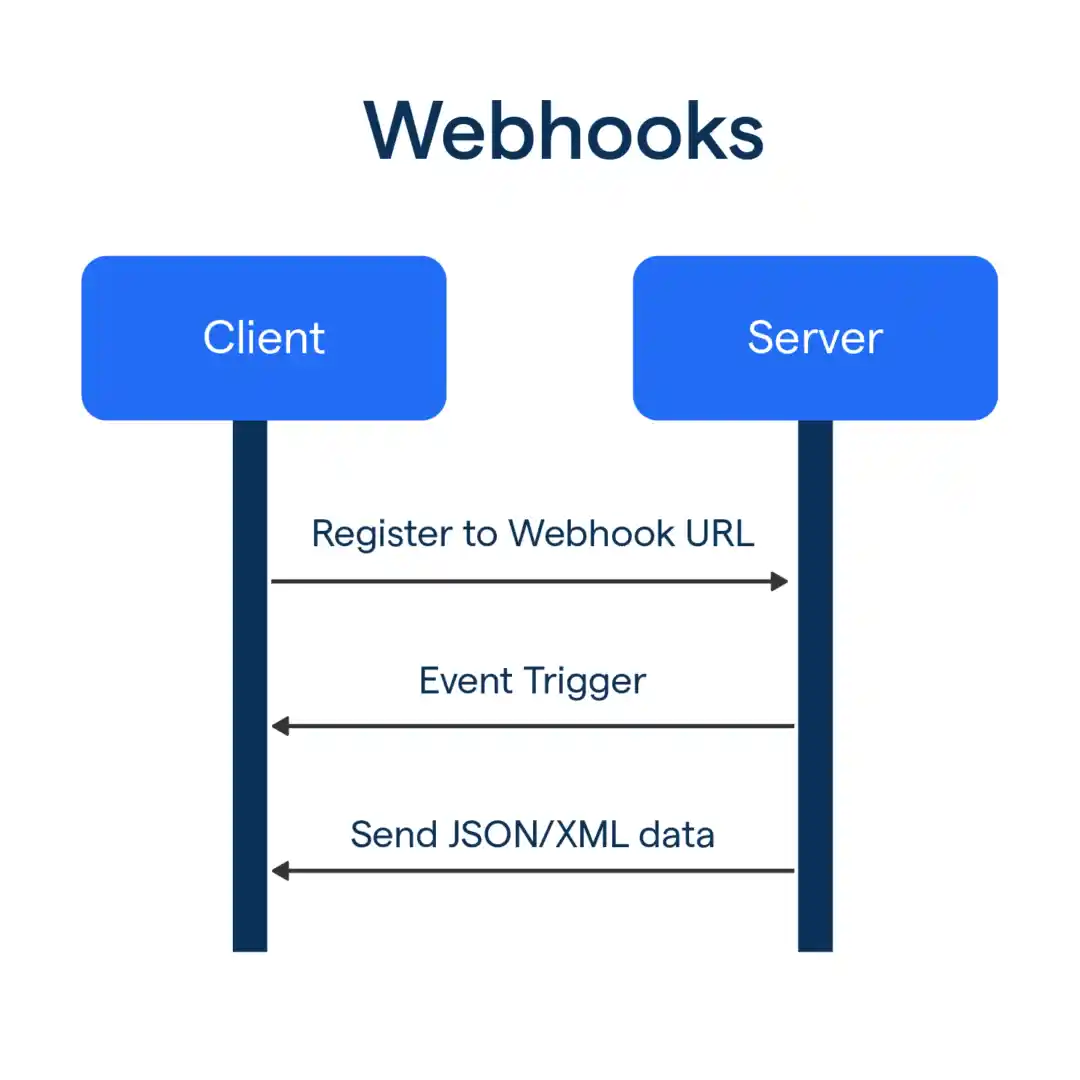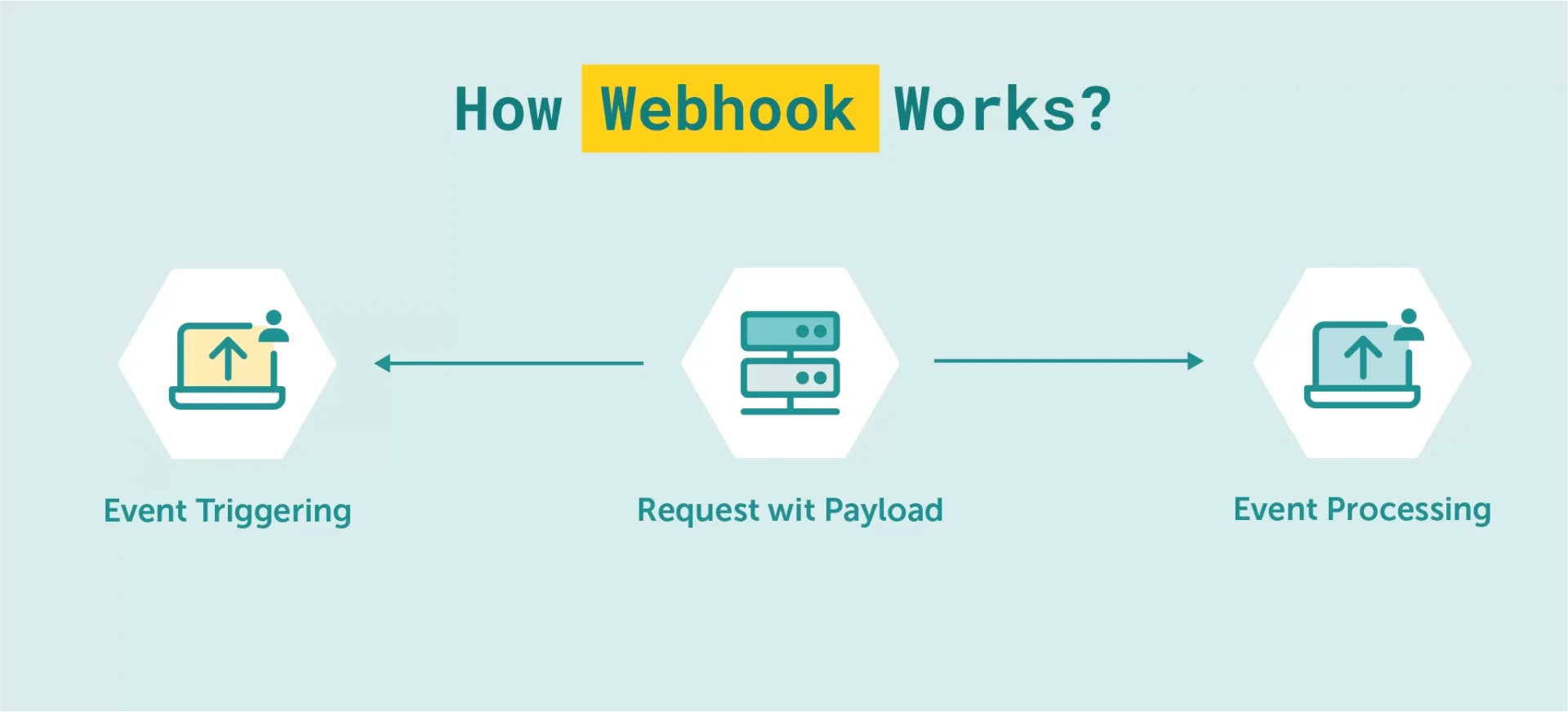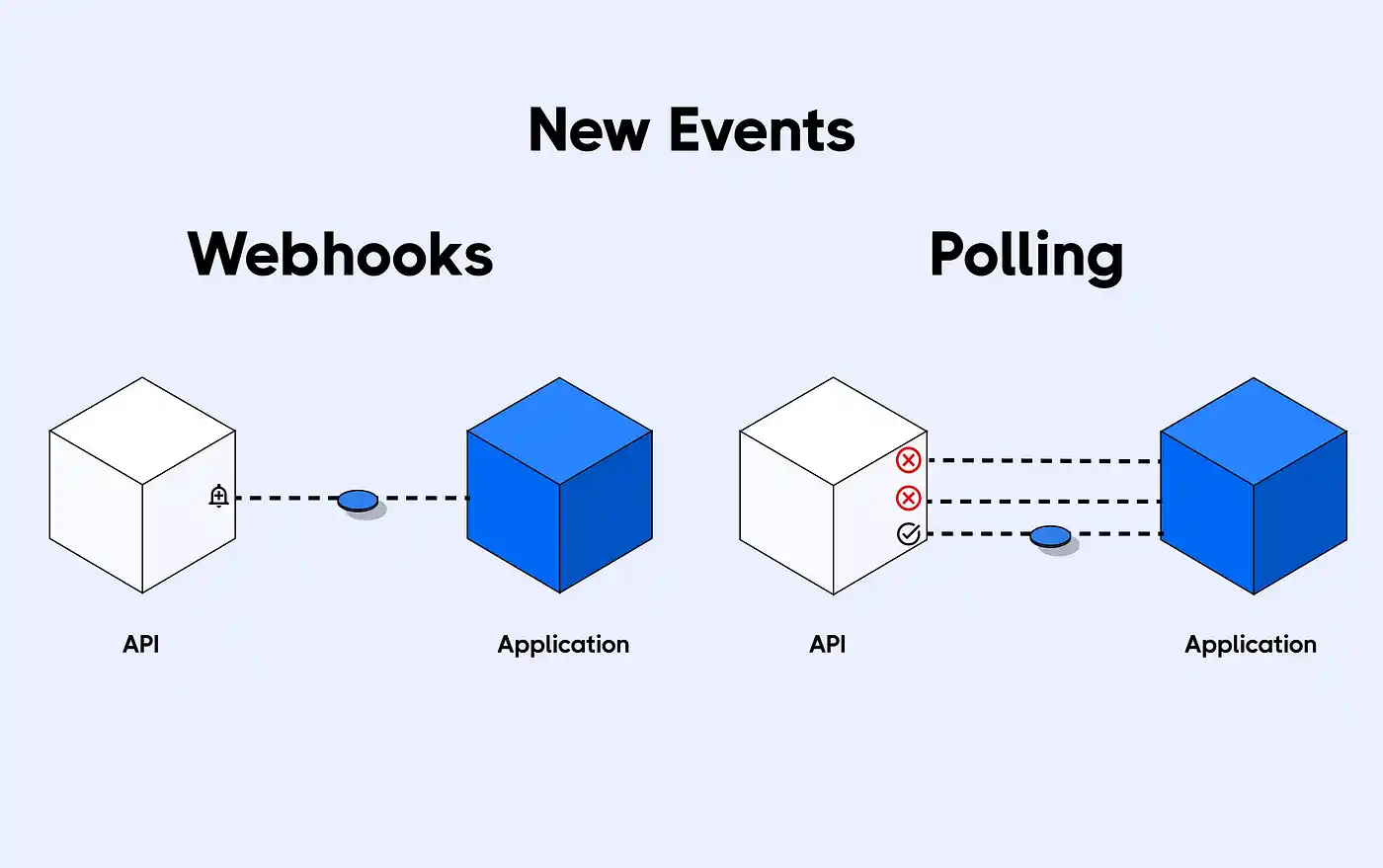Table of Contents
Introduction
In today’s interconnected digital landscape, real-time data exchange and seamless system integration have become crucial for modern applications. At the forefront of this evolution stands a powerful yet surprisingly simple mechanism: webhooks. These “reverse APIs” are revolutionizing how applications communicate and react to events, forming the backbone of many event-driven architectures. Let’s dive deep into the world of Event hooks and explore how they’re reshaping the technological landscape.
Understanding Webhooks: The Basics
At their core, webhooks are automated messages sent from apps when something happens. Think of them as a “phone call” for web applications – instead of constantly checking for updates (polling), applications receive instant notifications when events occur. This simple yet elegant solution has transformed how we build and integrate web services.
The concept is straightforward: Application A registers a URL with Application B. Whenever a relevant event occurs in Application B, it sends an HTTP POST request to the registered URL, notifying Application A about the event. This push-based approach is more efficient than traditional polling methods, where applications repeatedly check for updates.

What Are Webhooks?
At its core, a webhook is an HTTP callback or a user-defined HTTP callback that is triggered by specific events. When these events occur, the source application sends an HTTP request (usually a POST) to a URL specified in the webhook configuration. This request can contain data about the event, enabling the receiving application to take appropriate actions.
A Simple Example
Imagine you’re building an e-commerce platform. You want to send an email notification every time a new order is placed. Traditionally, you might set up your server to periodically check for new orders in your database. However, this approach can be inefficient and resource-intensive. Instead, with Event hooks, the payment gateway (like Stripe or PayPal) can notify your application immediately when an order is processed, triggering an email notification without any need for polling.
How Webhooks Work
Webhooks function through a straightforward process:
- Setup: The receiving application provides a URL endpoint to the sending service. This endpoint acts as the destination for webhook notifications.
- Event Trigger: A specific event occurs within the sending application, such as a user signing up, a file being uploaded, or a payment being made.
- Data Transmission: The sending application sends an HTTP POST request to the designated webhook URL. This request typically includes a payload containing information about the event.
- Processing: The receiving application processes the incoming data, performing any necessary actions or updates.

Key Features of Webhooks
- Real-Time Updates: Webhooks deliver data as soon as an event occurs, eliminating the delays inherent in polling.
- Efficiency: By pushing data only when needed, Event hooks reduce unnecessary network requests, saving bandwidth and computational resources.
- Simplicity: Implementing webhooks often requires minimal setup and is less resource-intensive compared to other real-time communication methods like WebSockets.
The Advantages of Webhook Implementation
1. Real-Time Data Flow
Unlike traditional polling methods, Event hooks enable true real-time updates. When an event occurs, the notification is instant, allowing systems to react immediately. This real-time capability is crucial for:
- Payment processing systems that need immediate transaction confirmations
- Chat applications requiring instant message delivery
- E-commerce platforms needing immediate inventory updates
- CI/CD pipelines triggering automated builds and deployments
2. Resource Efficiency
Webhooks significantly reduce server load and network traffic. Instead of making repeated API calls to check for updates, systems receive notifications only when necessary. This efficiency translates to:
- Lower infrastructure costs
- Reduced API usage
- Improved application performance
- Better scalability
3. Improved User Experience
The real-time nature of webhooks enables developers to create more responsive and interactive applications. Users benefit from:
- Instant notifications
- Real-time data updates
- Smoother workflow automation
- Reduced latency in system responses
Common Use Cases and Applications
E-commerce Integration
Modern e-commerce platforms heavily rely on webhooks for various operations:
- Payment processing notifications
- Order status updates
- Inventory management
- Shipping notifications
- Customer communication triggers
DevOps and CI/CD
Webhooks are fundamental to modern DevOps practices:
- Automated build triggers
- Deployment notifications
- System monitoring alerts
- Code repository events
- Infrastructure scaling events
SaaS Integration
Software-as-a-Service platforms use Event hooks to enable seamless integration:
- CRM updates
- Marketing automation
- Analytics event tracking
- Customer support ticket creation
- Subscription management
Webhooks vs. Polling: A Comparative View

Polling:
- Involves periodic requests from the client to check for updates.
- Can result in unnecessary requests if no new data is available.
- Higher latency, as updates are only retrieved during the next polling interval.
Webhooks:
- Operate on a push model, delivering updates only when events occur.
- Reduce redundant requests, improving efficiency.
- Enable near-instantaneous data sharing.
Challenges and Solutions
1. Handling Failed Deliveries
Webhook delivery isn’t guaranteed, so implementing proper failure handling is essential:
- Set up retry mechanisms
- Implement dead letter queues
- Monitor delivery success rates
- Create failure notification systems
- Maintain delivery logs for debugging
2. Scaling Webhook Systems
As systems grow, scaling webhook infrastructure becomes crucial:
- Implement rate limiting
- Use message queues for high-volume scenarios
- Set up load balancing
- Monitor system performance
- Implement caching mechanisms
3. Maintaining Webhook Endpoints
Keeping webhook endpoints maintained and updated requires attention:
- Regular testing of endpoint availability
- Monitoring endpoint performance
- Updating endpoint URLs when necessary
- Managing webhook subscriptions
- Implementing webhook lifecycle management
Future of Webhooks
The future of webhooks looks promising with several emerging trends:
1. Standardization
The webhook landscape is moving towards standardization with:
- Common payload formats
- Standardized security practices
- Unified webhook management protocols
- Industry-specific webhook standards
- Improved interoperability
2. Enhanced Security
Security mechanisms are evolving to include:
- Advanced authentication methods
- Improved encryption standards
- Better payload validation
- Enhanced monitoring tools
- Automated security checks
3. Improved Developer Tools
The development ecosystem is growing with:
- Better debugging tools
- Improved testing frameworks
- Enhanced monitoring solutions
- Simplified integration platforms
- Advanced webhook management systems
Conclusion
Webhooks have become an indispensable tool in modern web development, enabling real-time, event-driven architectures that power today’s dynamic applications. Their simplicity, efficiency, and effectiveness make them an excellent choice for building integrated systems that require real-time updates and automated workflows.
As technology continues to evolve, Event hooks will play an increasingly important role in connecting systems and enabling seamless communication between applications. Understanding and implementing webhooks effectively is becoming a crucial skill for developers and system architects alike.
Whether you’re building a small application or managing a large-scale system, webhooks offer a powerful solution for event-driven communication. By following best practices and staying aware of emerging trends, you can leverage webhooks to create more responsive, efficient, and scalable applications.